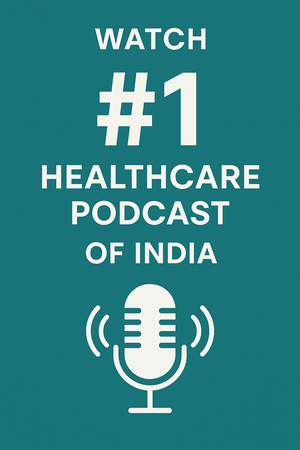Infantile hemangiomas are the most common benign tumors seen in infants and young children. They are composed of abnormally dense clusters of blood vessels and usually appear as red or purplish skin growths during the first few weeks of life. While many hemangiomas resolve on their own over time, some can grow rapidly or occur in sensitive areas, requiring medical attention.
Parents often panic when they notice a red or bluish bump on their baby’s skin, but most infantile hemangiomas in children are harmless and need only monitoring. However, it’s important to understand the causes, warning signs, and treatment options, especially when the hemangioma affects breathing, vision, or other vital functions. This guide is designed to help parents and caregivers understand this condition better, using easy-to-follow language and important SEO keywords like “infant hemangioma symptoms,” “birthmark treatment in babies,” and “vascular tumors in infants.”
What is an Infantile Hemangioma?
An infantile hemangioma is a type of vascular tumor that typically appears within the first few weeks of life. It is often referred to as a “strawberry birthmark” due to its bright red, raised appearance. These growths are caused by a buildup of blood vessels in the skin or internal organs. Most hemangiomas are superficial, but some are deep or combined.
They undergo three key phases:
- Proliferation phase (0–6 months): Rapid growth stage
- Involution phase (6 months to 5–10 years): Slow shrinkage
- Residual phase: Skin may have loose tissue or discoloration post-involution
While most hemangiomas are not life-threatening, they can cause functional impairments or aesthetic concerns, especially if located on the face, scalp, eyelids, or near the airway.
Causes of Infantile Hemangioma
Why Do They Occur?
The exact cause of infantile hemangioma in children remains unknown. However, several risk factors are known to increase the likelihood:
- Premature birth: More common in babies born before 37 weeks
- Low birth weight: Especially in babies weighing less than 1500 grams
- Female sex: Girls are 3–5 times more likely to develop them
- Multiple births: Twins or triplets have a higher risk
- Caucasian ethnicity
- Advanced maternal age or use of fertility treatments
These factors may interfere with vascular development in utero, leading to the overgrowth of blood vessels in infancy.
Symptoms of Infantile Hemangioma
Common Signs Parents Should Recognize
Infantile hemangiomas typically begin as small red marks or pale patches that become more noticeable within the first month after birth. Symptoms vary depending on their depth and location:
- Superficial hemangiomas: Bright red, raised, soft swellings on the skin (like a strawberry)
- Deep hemangiomas: Bluish or skin-colored lumps beneath the surface
- Mixed hemangiomas: Combination of both features
Other symptoms can include:
- Ulceration (breakdown of the skin)
- Bleeding or infection
- Impaired vision, breathing, or hearing depending on location
- Rapid size increase in the first few months
Not all hemangiomas are visible on the outside. Internal hemangiomas, especially in the liver or airway, may present with symptoms like respiratory distress or feeding difficulties.
Types of Infantile Hemangiomas
Based on Appearance and Location
Hemangiomas are categorized into types based on their depth and anatomical location:
- Focal hemangiomas: Isolated single lesions in one area
- Segmental hemangiomas: Covering a broader region, sometimes following a skin segment
- Multifocal hemangiomas: Multiple lesions scattered across the body
- Visceral hemangiomas: Found inside organs like the liver or brain
Understanding the type of hemangioma helps determine treatment urgency and follow-up.
Diagnosis of Infantile Hemangioma
Clinical Assessment and Imaging
Most infantile hemangiomas can be diagnosed through a physical examination by a pediatrician or dermatologist. However, additional tests may be necessary if the hemangioma:
- Is growing rapidly
- Is located near vital structures (eyes, airway)
- Is associated with other anomalies
Tests include:
- Ultrasound with Doppler: To assess blood flow and depth
- MRI or CT scan: In complex or deep lesions
- Biopsy: Rarely needed unless malignancy is suspected
In cases with multiple hemangiomas, abdominal ultrasound may be performed to rule out internal organ involvement.
Treatment of Infantile Hemangioma
Watchful Waiting vs Medical Intervention
Most hemangiomas don’t need any treatment and resolve on their own. However, intervention is necessary in about 10–15% of cases, especially when complications arise.
Non-Surgical Options
- Oral Propranolol: The first-line treatment. A beta-blocker that shrinks hemangiomas effectively with minimal side effects. It’s usually given over several months.
- Topical Timolol: For small, superficial hemangiomas, especially on the face.
- Oral Steroids: Used when beta-blockers are contraindicated or ineffective.
- Laser therapy: For residual redness or ulcerated hemangiomas.
Surgical Treatment
Surgery is rarely needed but may be considered for:
- Persistent growths causing cosmetic or functional problems
- Residual tissue after involution
- Ulcerated lesions that don’t heal
Early consultation with a pediatric dermatologist or vascular specialist ensures the best outcomes.
Complications of Infantile Hemangiomas
Though benign, hemangiomas can lead to:
- Ulceration and bleeding
- Scarring
- Functional impairment (especially if located near eyes, nose, or airway)
- Psychological impact due to visible marks on the face
That’s why early diagnosis and proper monitoring are essential to avoid complications.
Prevention and Parental Care
Can Infantile Hemangiomas Be Prevented?
There’s no definitive way to prevent infantile hemangiomas. However, knowing the risk factors and ensuring regular pediatric check-ups can help catch them early.
Parents are advised to:
- Monitor the lesion daily for size, color, or surface changes
- Avoid irritation or trauma to the affected area
- Maintain skin hygiene to prevent infections
- Follow medication regimens strictly when prescribed
Parental awareness plays a key role in effective management.
Comparison Table: Superficial vs Deep Infantile Hemangioma
| Feature | Superficial Hemangioma | Deep Hemangioma |
|---|---|---|
| Color | Bright red or strawberry-colored | Blue or skin-toned |
| Location | On skin surface | Under the skin or in deeper tissues |
| Onset | Within first few weeks | May appear later |
| Texture | Soft, compressible | Firm or rubbery |
| Visibility | Clearly visible | May be less obvious initially |
| Complications | Ulceration, bleeding | Compression of internal structures |
Frequently Asked Questions (FAQs)
What is an infantile hemangioma and how common is it in babies?
An infantile hemangioma is a benign tumor made up of blood vessels that appears in infancy, typically within the first few weeks of life. These are among the most common tumors in infants, affecting about 4–5% of all newborns. They are more common in females, premature babies, and those with low birth weights. Hemangiomas can appear anywhere on the body, but most commonly they are found on the face, scalp, chest, or back. While they might look alarming to new parents, they are usually harmless and tend to regress over time without treatment.
Are infantile hemangiomas dangerous or painful for babies?
Most infantile hemangiomas are not dangerous and don’t cause pain. However, complications can occur depending on their size and location. For example, hemangiomas near the eyes can affect vision, while those in the airway may interfere with breathing. Ulceration (skin breakdown) is the most common complication and can cause significant pain and increase the risk of infection. Fortunately, with appropriate monitoring and treatment, most hemangiomas do not result in serious problems.
What causes infantile hemangiomas to develop?
The exact cause of infantile hemangiomas is still unknown, but researchers believe they may be related to abnormalities in blood vessel development during fetal growth. Certain risk factors, such as being born prematurely, low birth weight, being female, and multiple gestations (like twins or triplets), increase the chances of developing a hemangioma. There is also some evidence that the mother’s age and use of fertility treatments may play a role.
How are infantile hemangiomas diagnosed by doctors?
Diagnosis is usually based on visual inspection by a pediatrician or dermatologist. Most hemangiomas have a distinct appearance and don’t require invasive testing. If the growth is large, rapidly growing, or in a sensitive area, imaging studies such as ultrasound or MRI might be ordered to determine the depth and extent. In rare cases, a biopsy might be necessary to confirm the diagnosis, especially if the lesion doesn’t look like a typical hemangioma.
When do infantile hemangiomas start shrinking or going away?
Infantile hemangiomas usually start shrinking around 6–12 months of age. This phase is called “involution,” where the tumor slowly begins to fade and flatten. Most hemangiomas are significantly reduced or gone by the time a child is 5–10 years old. The speed of regression can vary from child to child, and while the growth itself may disappear, some children are left with loose skin or discoloration that may need cosmetic treatment.
What is the best treatment for infantile hemangioma?
Treatment depends on the size, location, and whether complications are present. The most effective and widely used treatment today is oral propranolol, a beta-blocker that helps reduce the size and color of the hemangioma. For smaller or superficial lesions, topical timolol may be enough. Steroids, laser therapy, and surgery are also options in select cases. The treatment plan is usually tailored by a pediatric dermatologist or a vascular anomalies specialist.
Are there any risks or side effects of propranolol treatment?
Propranolol is generally safe for use in infants, but like all medications, it has potential side effects. These include slow heart rate, low blood pressure, cold hands and feet, and sleep disturbances. In rare cases, low blood sugar may occur. That’s why propranolol treatment usually begins in a monitored hospital setting, and babies are closely followed up during treatment with regular check-ups and dose adjustments.
Can hemangiomas grow back after treatment?
Once a hemangioma begins to involute, it typically does not grow back. However, some hemangiomas may not completely disappear and can leave behind fatty tissue, residual redness, or visible blood vessels. In such cases, laser treatments or minor surgical procedures may be used to improve cosmetic outcomes. Re-growth after successful medical therapy is extremely rare.
Should I be worried if my baby has more than one hemangioma?
Multiple skin hemangiomas (more than five) could be a sign that there are also hemangiomas inside the body, such as in the liver. In such cases, doctors usually recommend an abdominal ultrasound or additional imaging to check for internal involvement. While it’s not always serious, internal hemangiomas can cause issues if they grow large or affect organs. Early detection ensures proper management and monitoring.
How can I care for my baby at home if they have a hemangioma?
Home care involves gentle handling of the affected area, keeping the skin clean, and avoiding trauma or pressure. Ulcerated hemangiomas need special wound care and sometimes topical antibiotics. Parents should follow all prescribed medications and attend regular follow-ups. It’s also helpful to take periodic photographs to monitor changes over time. If you notice rapid growth, bleeding, or signs of infection, consult your pediatrician immediately.
Research References on Infantile Hemangioma
| Title of Study | Author Name |
|---|---|
| Clinical Management of Infantile Hemangiomas | Dr. Ruchi Jain |
| Propranolol Therapy in Pediatric Vascular Tumors | Dr. Manoj Mehta |
| Imaging Features of Deep Hemangiomas in Infants | Dr. Sheetal Verma |
| Laser Treatment for Residual Hemangioma Tissue | Dr. Anuradha Chopra |
| Epidemiology of Vascular Anomalies in Neonates | Dr. Tanveer Singh |
| Risk Factors for Infantile Hemangiomas | Dr. Reena Aggarwal |
| Long-Term Outcomes After Hemangioma Involution | Dr. Ankit Sharma |
| Segmental Hemangiomas: Diagnostic and Therapeutic Challenges | Dr. Priya Iyer |
| Role of Beta-Blockers in Pediatric Dermatology | Dr. Sanjay Rao |
| Psychological Effects of Facial Hemangiomas in Children | Dr. Vandana Bhatia |






 and then
and then